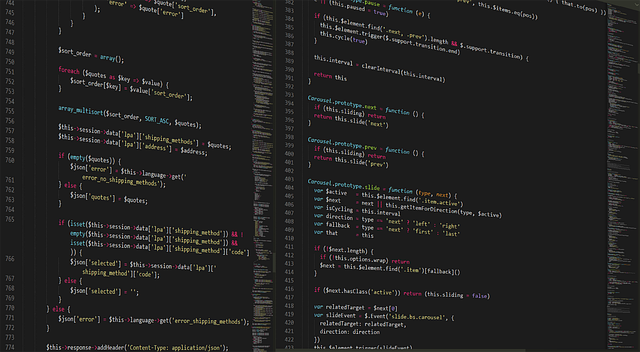Esports is growing up. What used to be all scrims, caffeine, and raw talent has started to look more like a serious sport. The reason? Talent development. Teams aren’t just scouting stars anymore, they’re building them. Training programs, coaches, performance analytics—these are now standard across top-tier organizations.
The shift is clear. Instead of just hoping a prodigy shows up in solo queue, orgs are investing in pipelines. Junior leagues, development rosters, mental coaches, and daily review sessions are the new norm. It’s about consistency and growth, not just clutch plays.
This isn’t cosmetic. We’re already seeing results. Countries and franchises that used to struggle at the international level are pushing deeper into tournament brackets. The skill gap is closing, not because the bar got lower, but because more players are hitting it. The playground era is over. Esports is entering its performance era.
The era of casual warmups and loose scrims is winding down. In 2024, in-house bootcamps are standard practice for serious content creators and competitive streamers alike. These aren’t just extended grind sessions—they’re structured, goal-driven environments with a clear focus: sharpen output, speed up content loops, and tighten performance under pressure.
Analytics coaches, game strategists, and performance analysts are no longer exclusive to esports teams. Top-tier vloggers now bring in specialists to dissect viewer behavior, optimize content flow, and map engagement spikes to real-world decisions. It’s become a quiet arms race—whoever understands their data best, wins the algorithm.
AI is quietly running in the background. Not to replace creators, but to fine-tune them. Tools track clip efficiency, speech pace, even emotional cadence on camera. They offer tactics, not answers—suggesting tweaks that can make a good video great, or a loyal viewer share your next three uploads without blinking. The future isn’t fully automated, but it is deeply informed.
Mental Health, Recovery, and the New Edge for Creators
Burnout has been part of the conversation around vlogging for years. What’s different now is creators—and the platforms themselves—are finally treating wellness as a performance tool instead of a personal side note. Top vloggers are doubling down on basic pillars like sleep hygiene, tracking their nutrition, and building in mental recovery just like athletes would.
Sleep is no longer optional. Creators are learning how rest affects cognitive sharpness, idea generation, and even vocal delivery. Nutrition is moving beyond aesthetics into energy management. More creators are working with coaches or using tech to track their performance on levels outside of views and likes.
The biggest shift? Mindset coaching. It’s becoming a differentiator. Those who have someone in their corner to help them build resilience, manage pressure, and stay focused are sticking around longer—and winning bigger. This isn’t fluff. It’s strategy.
Companies backing full-person growth are already getting results. Take creator studios that’ve built recovery pods into the office setup. Or agencies that offer not just editing help, but wellness stipends. Investing in the creator’s fuel source—mind and body—isn’t a nice-to-have anymore. It’s the edge.
Top teams aren’t just waiting for stars to self-promote anymore. They’re actively scouting fresh talent through ranked ladders, grassroots tournaments, and creator platforms like Twitch and YouTube. If someone is climbing fast or pulling consistent views, chances are they’re already on a radar somewhere.
More orgs are also stepping into schools and campuses. High schools and universities now host esports programs backed by industry partnerships. Some even offer scholarships. It’s not just about skill — it’s about building a pipeline, early, from education into pro-level play.
To complete the system, many teams have built out academy squads. These function like minor leagues: train fresh recruits, polish their gameplay, test their mental game, and prepare them for the top tier. It’s structured, selective, and designed to create long-term player development — not just highlight-reel moments.
Financial stability in esports isn’t just about signing your first contract. As more pros rise faster and younger, there’s a growing demand for real education around income, savings, taxes, and what comes after the spotlight dims. Financial literacy programs aren’t a nice-to-have anymore—they’re survival tools. Teams and orgs that invest in this kind of support are seeing fewer burnout stories and stronger long-term loyalty.
Post-esports career planning is also gaining traction. Players want more than a quick stint at the top; they want a future. Coaching paths, media training, content strategy, brand partnerships—it’s all fair game for those thinking a few steps ahead. And when organizations help talent pivot into these roles, everyone wins.
Retaining talent within the ecosystem is smarter than cycling through rookies. A former player who becomes a coach or a brand ambassador brings credibility and culture. It keeps the community tight and the storytelling authentic. For orgs, it means building more than a roster. It’s building a legacy.
Winning more isn’t luck. It’s strategy, structure, and staying power. In competitive vlogging, higher performance directly leads to more prize money, better brand deals, and prime platform features. Top-tier creators are treating their work like a sport: tracking analytics, optimizing content cycles, and investing in feedback loops.
Burnout used to be an expected cost of going viral. In 2024, serious creators are shifting that mindset. Talent development is making a difference—delegating where it counts, protecting mental stamina, and creating systems that don’t crash under pressure. The result? Fewer flameouts, more sustainable output.
Strong teams win long term. Behind the camera, the most successful vloggers aren’t solo. They’ve built tight crews—whether it’s a two-person edit pod or a remote squad of planners and producers. With clear communication, defined roles, and a shared vision, they’re not just surviving. They’re scaling.
In high-stakes matches, raw talent used to dominate the spotlight. But 2024 is showing us that trained team dynamics are stealing the wins. It’s no longer just about individual star power. The vloggers making moves in this space aren’t shooting in isolation—they’re operating like tight crews with roles dialed in, communication crisp, and trust already built.
Whether it’s reaction channels collaborating with editors in real-time or daily vlog teams executing against minute-by-minute schedules, the shift is clear. Audiences can feel the chemistry, and platforms reward it with longer watch times and stronger engagement. This kind of sync lets creators move fast, improvise without chaos, and deliver polished content without losing authenticity.
When the stakes are high—brand partnerships, viral windows, monetized streams—having a trained team means you execute, not scramble. That edge is starting to separate the casuals from the professionals.
The Future of Esports Is Professional, Strategic, and Sustainable
Esports isn’t the wild west anymore. The days of scrappy teams and one-hit-wonder rosters are quickly getting left behind. In 2024, professionalism isn’t optional — it’s the price of entry. Investors, sponsors, and fans want consistency. That means solid infrastructure, experienced management, and long-term brand building.
The smartest organizations are treating teams less like influencers and more like performance-driven assets. Coaching staffs are growing. Analytics teams are tracking everything. Player wellness is finally getting serious attention. The goal is no longer just to win tournaments, but to build ecosystems that can stay profitable between wins.
Off the server, strategy rules. Merch, digital content, community engagement — they all play into a bigger game. The legacy orgs that adapt and newer teams that commit to patience and purpose are the ones we’ll still be talking about in five years. Everybody else? Background noise.





